CJC-F Announcements, CJC-F Events, CJC-F News, CLD Forensics
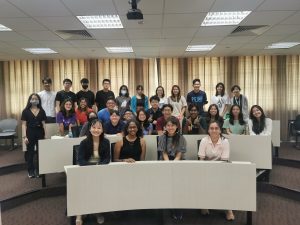
After much anticipation, CJC-F held its first in-person Welcome Event on 19th September 2022. It was a very exciting time as both previous and new members alike were able to meet their club mates, get to know each other, and embark on this shared journey of exploring our interest in forensic science together.
CJC-F History, Goal and Project Hierarchy
The event began with a detailed explanation of the history and journey of CJC-F given by our student Director Alyssa Phua and Vice Director Ellione Chow.

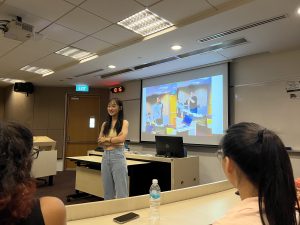

It was truly spectacular to hear from them how CJC-F began as a single event under the umbrella of the Criminal Justice Club, and grew rapidly over the past 2 years to a well-established interest group with 39 published research articles and 4 highly publicized external events. Next, members discussed future goals of the club as well as contributions that members hope to make. The sharing provided all members with an excellent understanding of the values, mission and goals of CJC-F.
Team Lead Sharing
After this, the team leads were invited to briefly introduce their teams as well as their plans in the upcoming academic year. It was an extremely engaging sharing session with all team leads doing their best to recruit members for their teams!
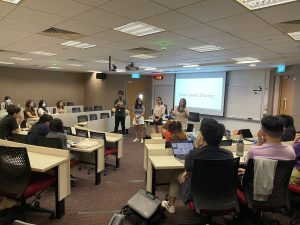
Ice-Breaker Bingo
Next up was a fun game of Ice-Breaker Bingo! Members were each given a bingo sheet and had to find people who had certain funny or silly experiences, items, or characteristics to sign off on the corresponding bingo boxes. These included having filmed a TikTok in public, being able to touch your tongue to your nose or having slept in Prof Stella’s class – which, for some reason, was a box that no one would sign! 😉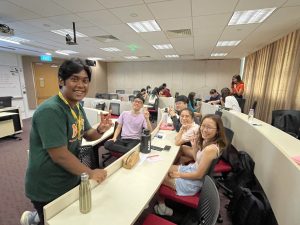
While the experience of 25 people frantically going around the room trying to obtain signatures was a chaotic one indeed, the ice-breaker was ultimately a resounding success, as members ended up getting to know one another better and on a deeper level.
Mass Game – Clue Finding
After the Ice-Breaker Bingo was a clue-finding mass game. A crime scenario was introduced (hypothetical, of course!). Then, members were divided into smaller teams and tasked with finding clue envelopes that were hidden on the 4th and 5th floors of the building in 20 minutes. Each of the envelopes contained either evidence, testimony, or action cards. Evidence and testimony cards could be used to reconstruct the crime, while action cards could be used to steal, exchange, or bomb other teams’ clues.
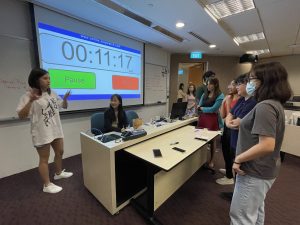
Once the rules were explained, an action-filled 20 minutes ensued, in which members put on their detective hats, ran around, and even accidentally got locked in a stairwell.
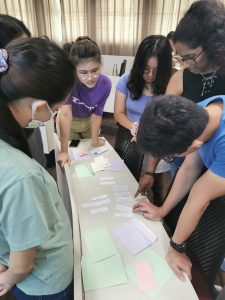
Once members gathered back in the room, they were given 10 minutes to discuss and come up with their interpretations of the crime as well as play any action cards obtained to gain more information. Every team was then given the chance to put forward their version of the crime.
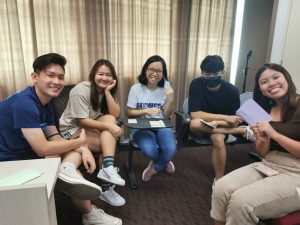
The entire game was immensely entertaining and drew plenty of smiles and laughter. However, it also taught members the importance of evidence and the influence of available context on evidence. It was fascinating to watch the same pieces of evidence being interpreted differently based on the information available to the team.
Masterclass in Forensic Science and Legal Systems
Last up on the agenda was the long-awaited masterclasses in forensic science and the legal system. Zheng Yen Phua, who is currently a doctoral researcher working as a teaching assistant in the forensic science program at NUS, took the stage for the forensic science portion of the class. He led members through multiple topics that were integral to forensic science such as blood spatter analysis, DNA profiling through STRs (short tandem repeats), fingerprinting, and forensic medicine. The forensic science masterclass ended with the examination of the real-life Stirling Road Murder case and the demonstration of how forensic evidence was integral to the conviction of the killer.
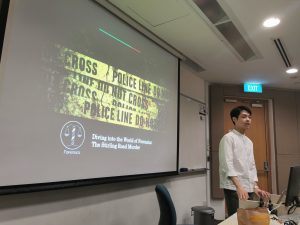
Finally, the event was concluded with Alyssa presenting the final masterclass on a brief introduction to Singapore’s criminal legal system.
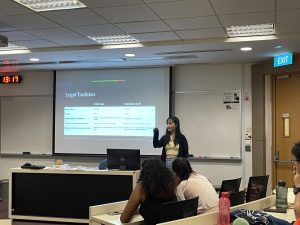
This sharing session was incredibly insightful for the non-law students in particular, who got a glimpse into the basics of the two legal traditions, the hierarchy of courts in Singapore’s legal system and the trial process. Alyssa also explained the difference in the standard of proof for the defense and prosecution in a criminal trial – a concept that the author found particularly thought-provoking – which is based on the premise of “innocent until proven guilty”.
Conclusion
In short, the entire event was a truly enjoyable and informative way to spend our Monday afternoon before the struggles of recess week!
*The views and opinions expressed in this article do not constitute legal advice and solely belong to the author and do not reflect the opinions and beliefs of the NUS Criminal Justice Club or its affiliates.
Authors’ Biography
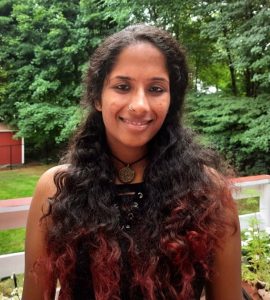 Avanti Balaji (Year 2 Psychology Major)
Avanti Balaji (Year 2 Psychology Major)
Avanti Balaji is a second-year NUS undergraduate current majoring in psychology. Given her deep interest in the roles and real-life applications of psychology, Avanti joined the CJC-F to gain more exposure and learn about the fields of law, forensics, and their relation to psychology. In pursuit of this interest, she also intends to minor in forensic science. She is currently part of the Forensic Science Conference planning committee as well as a member of the team focusing on forensic psychology.


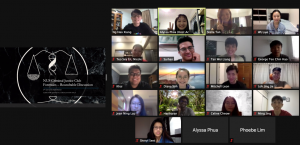
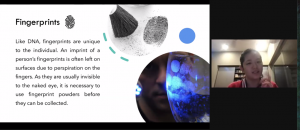
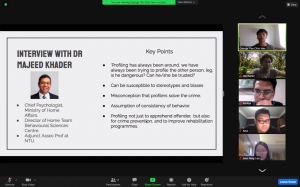
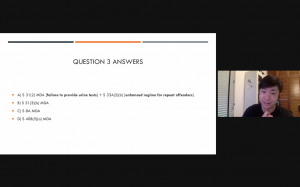
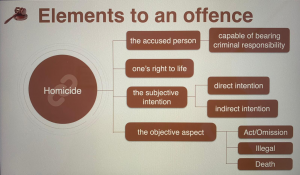
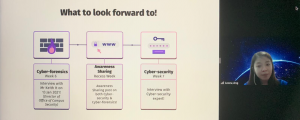
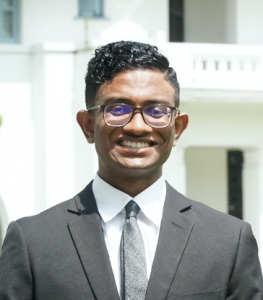 Hariharan Ganesan is a Y2 student at the NUS Faculty of Law. He is currently pursuing his interest in criminal law working as a research assistant for Assistant Professor Cheah Wui Ling. He is currently a Project Manager in CJC Forensics, heading the publication Initiations: A Glimpse into Forensics. Beyond school, Hariharan volunteers as a Silver Generation Ambassador, reaching out to Merdeka Generation seniors on the Merdeka Generation Package. In his free time, Hariharan enjoys playing squash recreationally.
Hariharan Ganesan is a Y2 student at the NUS Faculty of Law. He is currently pursuing his interest in criminal law working as a research assistant for Assistant Professor Cheah Wui Ling. He is currently a Project Manager in CJC Forensics, heading the publication Initiations: A Glimpse into Forensics. Beyond school, Hariharan volunteers as a Silver Generation Ambassador, reaching out to Merdeka Generation seniors on the Merdeka Generation Package. In his free time, Hariharan enjoys playing squash recreationally.